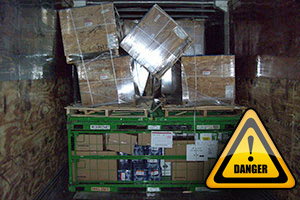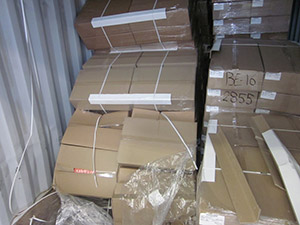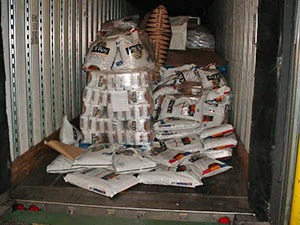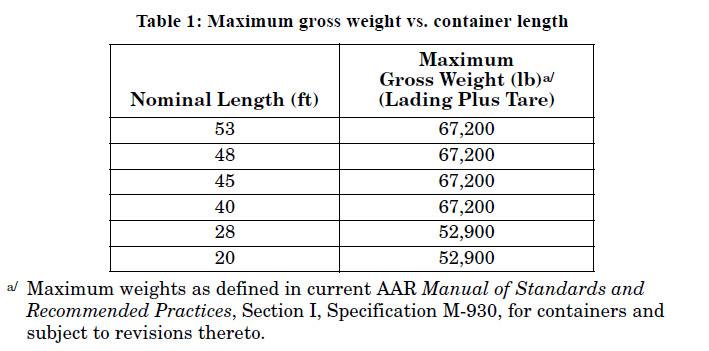Optimizing Shipping Load Patterns
Pallet Loading Patterns – Litco Can Help!
Get a Complete Blocking / Bracing / Dunnage System FREE for Your First Load,
Plus Optimized Load Planning Diagrams

Our FREE Load Optimization Software Service puts you in control to comply with regulations in loading intermodal cargo containers for over-the-road trucking and railcar transit. With an optimized load diagram built using TOPS software, Litco’s shipping experts can help you maximize cubic feet per load while minimizing the costs of inflatable and cardboard dunnage, keeping your products safe, secure and damage-free.
Your First Shipment Travels with FREE Void Fill and Dunnage Products from Litco’s Advanced Product Damage Prevention Toolset
Experts in Load Optimization and Damage Prevention
The number one reason for returned goods is damage caused by insecure, unstable packing in intermodal shipping containers or trucks. Effectively distributing the weight and volume of a load involves planning for empty space and effectively bracing your cargo to avoid damage caused by unblocked cargo shifting while in-transit.
Even palletized loads that seem stable, will lean or fall over in the trailer based on lateral forces (side-to-side shifts) put on cargo during transportation. Optimizing the pallet loading patterns of your SPECIFIC FREIGHT whether you ship via 53 ft. trailer, railcar or intermodal container, means juggling 3 separate issues:
In addition to product damage, disastrous accidents can occur if freight shifts while in transit. For this reason, the American Association of Railroads (AAR) develops regulations (download a free copy of their current requirements for blocking and bracing cargo in intermodal containers here) to stipulate how dunnage is to be used when packing containers that will be transported by railcar.


Weight as the First Consideration
When filling an intermodal container or truck with palletized product or other unitized loads, there are several variables that affect your optimized loading methodology. The first and likely most significant variable is weight. If the product you are shipping is heavy, the capacity of the trailer or container will limit your loading options.
A typical (empty) trailer with tractor attached, including diesel fuel weight can be about 35,000 to 36,000 pounds.
The maximum legal gross weight to drive without any special permits in the US is 80,000 pounds.
This means that a full truckload could carry 44,500 pounds max cargo weight. This weight calculation needs to include product, packaging, dunnage bags, and pallets. If being conservative, it may be helpful to calculate based on about 42,000 pounds, allowing for an extra 1,500 pounds over product weight.
PRO TIP: If you are looking for a lighter-weight pallet, economical enough to use for one-way shipping and ISPM 15 (export-ready) compliant, check out Litco’s molded wood pallets.
Weight considerations for shipping intermodal
Maximum Weights, Weight Distribution, and Center of Gravity
A. The load weight must not exceed the limit as stated on the manufacturer’s plate. Combined weight of trailer and lading may not exceed 65,000 lb.* Combined weight of container and lading may not exceed the weight specified below for the length of container being loaded:

*Maximum weights as defined in current AAR Specification M-931-04 for trailers (effective 2/1/04 and subject to revisions thereto.
**Maximum weights as defined in current AAR Specification M-930-08 for containers (implemented 10/2008), and subject to revisions thereto.
B. Lading weight in trailers or containers must be evenly distributed both crosswise and lengthwise, and combined weight of lading and trailer or container must conform to all federal, state, provincial, and local regulations and transportation service requirements used at origin and to final destination. (See Illustrations 1, 2, 3, and 4.)
C. Combined center of gravity (measured from top of rail) of car, trailer or container, and load is not to exceed 98 in
Weight Distribution is Critical. Loading a trailer so it will not be overweight on any axle
The problem OTR truckers most often run into is not the total gross weight being over 80,000 – it’s having the truck loaded improperly so it is overweight on one of the tandem axles.
Part of the TOPS program helps your warehouse truck loading team properly distribute the cargo from front to back in the trailer based on weight.
As a starting point, it is important to know 3 things:
NOTE: If your trucking company is stopped for illegal weight distribution – even if the entire load is below weight limits – the shipment will need to come back to your warehouse for a re-load causing extra unpaid work for both the manufacturer and the trucking company.
Step-by-Step 53 ft Trailer Pallet Loading Diagram and Other Configurations
By inviting a Litco damage prevention expert to work with you, you are getting access to industry-leading load configuration tools created by TOPS Engineering. MaxLoad Pro is a cargo load planning, container loading, freight calculation and cube optimization software. It can calculate accurate container and truck load plans by determining ideal ways to palletize your goods, and using intelligent loading algorithms and extensive stacking rules develop a plan for you to follow so you can load mixed sized products into containers and vehicles. Litco Manufacturing offers various product protection options like corner protectors, anti-slip rubber mats, and load separators.
AN EXAMPLE: One technique that can help create a more stable load and economize on space is loading pallets in a pinwheel configuration. Because the pallets most frequently used measure 40″x 48″ sometimes in a 96″ wide trailer you can turn one of the pallets 90 degrees, allowing two pallets to fit next to each other, hence the term “pinwheel.” Pinwheel loading creates additional stability by interspersing pallets with different load orientations.
Get a Complete Blocking / Bracing / Dunnage System FREE for Your First Load,
Plus Optimized Load Planning Diagrams
All Litco products are designed to Carry your products safely and
securely on through the most demanding supply chains.
